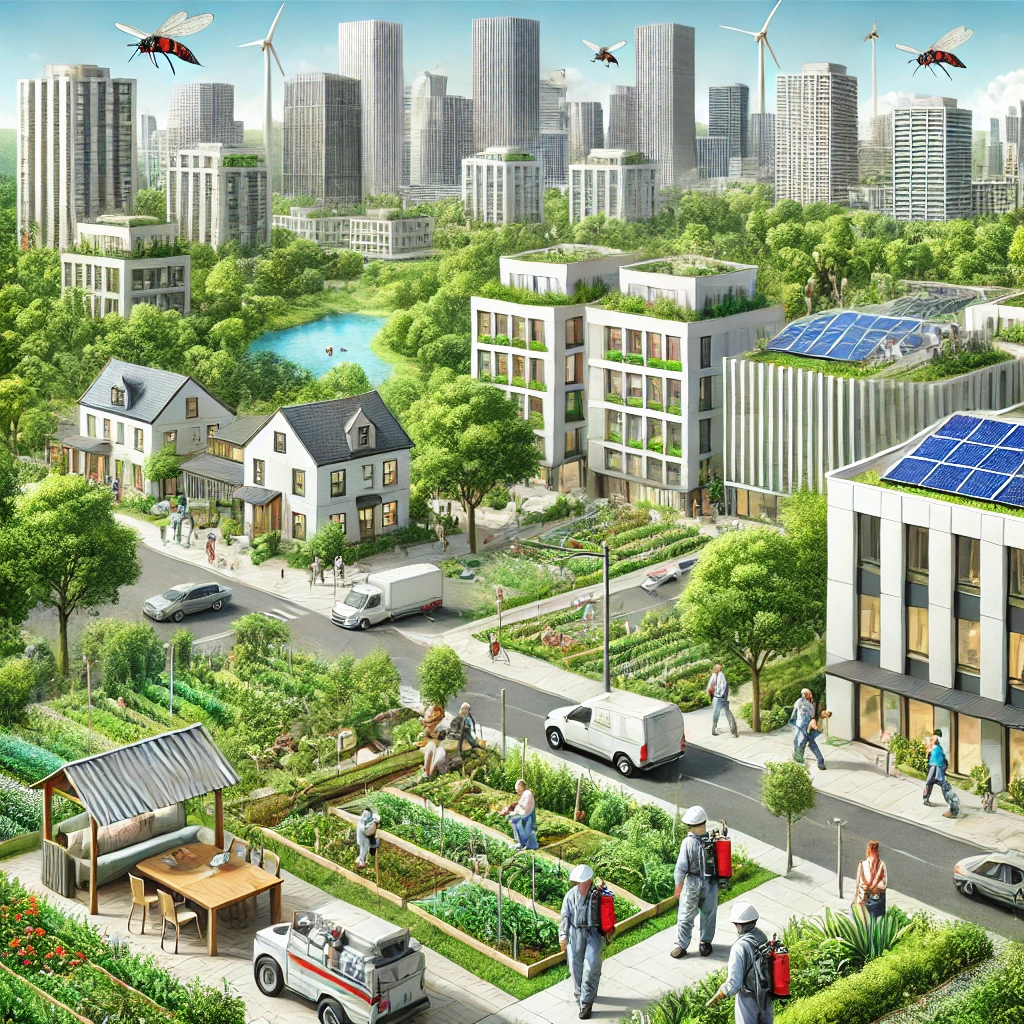
Sustainable urban development seeks to harmonize city growth with environmental preservation. Pest control plays a vital role in this balance. Effective pest management strategies protect both human health and the environment.
Ecological Pest Control: Minimizing Environmental Impact
Ecological pest control methods significantly reduce environmental impact. These methods, including natural predators and organic treatments, decrease reliance on synthetic chemicals. Such chemicals often contaminate soil and water. Consequently, these ecological approaches help preserve urban ecosystems and promote biodiversity.
Integration with Urban Design: Building for Sustainability
Incorporating pest control into urban design enhances sustainability. For example, green spaces and community gardens are planned with pest prevention in mind. The selection of pest-resistant plants and creation of habitats for natural predators are integral to this approach. As a result, urban environments become more resilient and eco-friendly.
Public Health Benefits: Preventing Disease Outbreaks
Effective pest control contributes to public health by preventing insect-borne disease outbreaks. By maintaining pest-free urban areas, the risks of diseases like dengue and Zika are reduced. This, in turn, improves the quality of life in cities. Therefore, pest management is crucial for maintaining public health and well-being.
Education and Community Awareness: Promoting Safe Practices
Educating the community about sustainable pest control is essential. Informed residents are more likely to adopt preventive measures and engage in pest management. Educational programs and awareness campaigns effectively promote safe and environmentally responsible practices. Thus, community involvement is key to successful pest control efforts.
Conclusion: Achieving a Greener Future
In conclusion, pest control is an essential component of sustainable urban development. By employing ecological methods and fostering community education, cities can achieve a balance between growth and environmental conservation. This approach not only safeguards public health but also supports a greener, more sustainable urban future.
